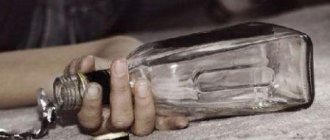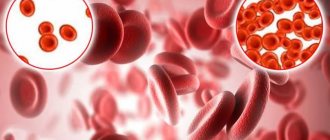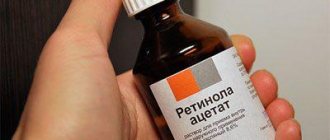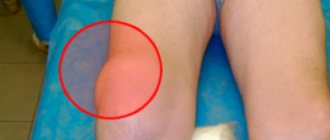Galina Timofeevna Kholmogorova, senior researcher at the Center for Preventive Medicine, Ph.D., told AiF readers about the rules of “quiet hunting” - about safety precautions when collecting mushrooms.
As toxicologists say, mushroom poisoning occurs all year round, despite the fact that the season is only spring, summer and autumn.
At first, people, unfortunately, are poisoned by mushrooms that they collect in the forest, in the field, then they begin to be poisoned by their canned preparations. To prevent this from happening, you need to follow the advice.
Mushroom poisoning is a great tragedy, because, as a rule, people are poisoned by large companies, families, and the losses are very heavy. At the end of spring - beginning of summer, the very first mushrooms appear in central Russia: morels and strings. They look like small lumps of earth, sometimes difficult to notice. They are very aromatic, tasty, but at the same time poisonous.
Read: Morels and strings, when to collect and how to cook →
It must be said that all mushrooms have toxins, which are present in varying quantities even in our most favorite mushrooms: porcini, boletus, boletus, etc. Morels and strings have poison, which has one peculiarity - it dissolves when these mushrooms are boiled . You should never make soups from spring mushrooms. Before preparing any dishes from these mushrooms, they must first be boiled for 40 minutes, then drained and boiled again for 10 minutes. Only after this can they be either fried or mushroom sauce made. Remember, if you bought morels and strings, under no circumstances should you cook soup from them!
How does mushroom poisoning occur?
Biologists have described over 3,000 species of various fungi. Of these, only 400 species are edible; all the rest pose a serious health hazard. Several species are permanently poisonous, and all the rest become poisonous when consumed raw or with improper preparation technology and therefore are called conditionally edible.
The most severe poisonings can be caused by pale, white and spring toadstools. If you accidentally eat just one quarter of their cap, severe poisoning occurs that can lead to the death of an adult. Toadstools are dangerous in any form, since the poison amanitin they contain does not lose its toxicity either when dried or when exposed to high temperatures.
Muscarine, which is contained in fly agarics and whitish talker, is also very dangerous for humans.
In addition to the above, severe poisoning is caused by the following types of fungi:
- stinky mushroom;
- pig;
- false honey mushrooms;
- parterre mushroom;
- satanic mushroom.
Incorrect cooking technology can cause poisoning from mushrooms, morels, strings and milk mushrooms.
TOP 5 most dangerous mushrooms
Some types of mushrooms are deadly poisonous - they cause death if even a small amount of mushrooms is eaten. But these types of poisonings most often cause the death of adults and children.
Death cap
The lethality of poisoning is from 35 to 95%. Externally, the mushroom can easily be confused with champignons, satanic mushroom or russula. Just 30 mg of the poison contained in the toadstool is enough to kill an adult; A child needs half the dose. It is not destroyed by temperature or chemical additives - salted, pickled, fried mushrooms can also lead to intoxication.
A typical feature of this type of poisoning is a long incubation period (up to 18 hours). After this time, a severe headache and vomiting develop simultaneously. Abdominal cramps become unbearable; visual disturbances are observed. The victim feels signs of dehydration - weakness, muscle cramps. Urine production decreases and then stops completely. The skin becomes bluish, and body temperature drops to 35–36 degrees.
Symptoms of mushroom poisoning
The first signs of mushroom poisoning usually appear several hours after eating them. The duration of the latent period depends on the type of poisonous mushrooms, their quantity, age, body weight, alcohol consumption and other reasons. For example, in case of poisoning with toadstool, the incubation period can last up to 6-7 hours, and when eating lepiot or cobweb, it extends to several weeks.
When poisoning with mushrooms, regardless of their type, some general symptoms are observed that are similar to those of other foodborne diseases. These include:
- cramping abdominal pain;
- nausea;
- vomit;
- diarrhea.
In addition, there are signs characteristic of mushroom poisoning.
In case of poisoning with toadstool, diarrhea and vomiting are profuse, they can occur up to 30 times per day. Due to disturbances in the hemostatic system, blood is often present in the stool, and vomit takes on the appearance of coffee grounds. Victims experience convulsions and increased cardiovascular and respiratory failure. The functions of the kidneys and liver suffer, up to the development of renal and liver failure, which is the cause of a coma, and subsequently the death of patients.
In addition to the general symptoms, poisoning with talkers and fly agarics is characterized by the following signs:
- lacrimation;
- increased salivation;
- constriction of the pupils;
- increased sweating;
- bronchospasm accompanied by shortness of breath;
- bradycardia;
- hypotension;
- convulsions;
- delusions and hallucinations;
- coma.
In case of panther fly agaric poisoning: dilated pupils, tachycardia, dry skin and mucous membranes.
Poisoning with morels and strings is characterized by the presence of convulsive syndrome, the development of toxic hepatitis, and damage to the spleen and kidneys. In the blood of patients, the membranes of red blood cells are destroyed (hemolysis), as a result, the urine becomes red.
Symptoms of mushroom poisoning in children are more pronounced, since the children's body is more sensitive to the effects of toxins.
Mushrooms are a difficult to digest product; they contain a lot of mushroom fiber - chitin, which is not only not digested, but also makes it difficult for digestive juices to access digestible substances. Mushroom poisoning often occurs when the technology for preparing conditionally edible mushrooms (requiring additional preliminary preparation) is not followed. Most often, poisoning is caused by improperly prepared morels or black milk mushrooms. Poisoning is also caused by insufficient knowledge among the population of botanical species of mushrooms, which can lead to the collection and purchase of, among other things, conditionally suitable, inedible and even poisonous mushrooms. Mushrooms are divided into: – edible, which do not require any specific processing before final preparation, these include porcini mushroom, boletus, boletus, champignons, honey mushrooms, boletus, chanterelles and many others; – conditionally edible, this species includes mushrooms, from the pulp of which a milky juice is released – it has a burning taste and can lead to poisoning. Such conditionally edible mushrooms require specific preparation before final preparation; these include milk mushrooms, svinushki, volushki and others. Specific processing of conditionally edible mushrooms means long-term soaking in salt water, many hours of rinsing under running water, pre-cooking with repeated draining of the broth. This all helps flush out existing toxins from the mushroom pulp. – poisonous/inedible mushrooms – impossible to neutralize in any way – neither prolonged cooking, nor rinsing under running water, nor soaking in a salty solution gives results. But if a small fragment of a poisonous mushroom gets into a common container with edible mushrooms, then poisoning is guaranteed. These include pale toadstools, fly agarics, gall mushroom, false chanterelles, false honey mushrooms and many others.
As practice shows, you can be poisoned by any mushrooms.
Causes of mushroom poisoning The main reason for these poisonings is the lack of public awareness about edible and inedible mushrooms. Mushroom poisoning can be caused by poisonous mushrooms themselves (pale toadstool, fly agaric, false mushrooms), conditionally edible mushrooms (puffballs, morels, stitches), and even edible mushrooms (as a result of violation of the technology of preparing mushrooms, during the decomposition of proteins in “old” mushrooms, and also waste products of established insects and worms). The most severe cases of mushroom poisoning are suffered by people with poor health and children. The child’s body does not yet have the necessary amount of enzymes to digest them. That is why it is not recommended to feed children under 14 years of age with any mushrooms, as they are difficult to tolerate poisoning. The main cause of mushroom poisoning is the presence of toxins in their fruiting bodies. In addition, fungi accumulate heavy metals, radionuclides, and pesticides from the soil. Among the 3000 varieties of all existing cap mushrooms, only 400 species are edible. The rest are considered poisonous or conditionally edible. Mushroom poisoning is classified as biological poisoning and is one of the most common seasonal food poisonings. Its cause is the consumption of mushrooms, which can be divided into three groups: Actually poisonous. Conditionally edible, releasing milky juice when broken. Edible, but accumulated toxic substances, giving them qualitatively new properties. If harvested incorrectly and processing conditions are violated, strings and morels containing gyromitrin and gelvelic acid become toxic. Gyromitrin is resistant to thermal effects, accumulating in the body, and begins to act gradually. Excessive consumption of morels and strings is life-threatening. The list of reasons that can lead to mushroom poisoning includes the following actions: • collecting unfamiliar or unfamiliar specimens; • picking mushrooms on the roadside, in close proximity to industrial enterprises, in areas of high radioactivity; • inattentive examination of parts of the mushroom: legs, caps, cap plates; • collection of wormy or rotten, old mushrooms; • biting the cap, taking a sample in its raw form; • use of low-quality packaging; • failure to comply with personal hygiene rules when picking mushrooms; • long-term (more than three hours) storage of unprocessed product; • non-compliance with the rules of heat treatment of mushrooms; • eating stale mushrooms; • eating mushrooms with alcohol.
Signs of mushroom poisoning The timing of the manifestation of the main signs of mushroom poisoning varies depending on their type, characteristics of preparation and consumption, and the amount of toxin obtained. The first symptoms can appear within half an hour after the poison has entered the body (talker, red fly agaric), or they can make themselves felt only after a few hours (pale toadstool) and even after a week or two (lepiota, cobweb). The clinical picture of mushroom intoxication in some cases is identical to the typical manifestations of any food poisoning: • pain in the stomach; • nausea and vomiting; • diarrhea; • increased body temperature; • chills, feeling of coldness in the extremities. This symptomatology is characteristic of poisoning with the satanic mushroom, pink-plated laticifers, and sometimes russula. Poisoning with some mushrooms has a pronounced specificity, thereby indicating a specific source of poison and simplifying the process of its detection. Specific symptoms of mushroom poisoning: - salivation, increased sweating, spasms in the bronchi, difficulty breathing, constriction of the pupil, a sharp decrease in blood pressure, weakness, hallucinations, loss of consciousness, coma - with intoxication with red fly agarics and talkers; – dry mucous membranes, dilated pupils, increased heart rate, increased blood pressure – symptoms of panther fly agaric poisoning; - muscle pain, pain in the abdomen, bloody stools, frequent vomiting, the consistency of which resembles coffee grounds (more than 20-25 times a day), heart and kidney failure, jaundice, coma - in case of poisoning with toadstools; – convulsions, hemolysis, kidney damage, increase in the size of the liver and spleen, jaundice, complete or partial loss of consciousness – when eating toxic morels and strings. The danger of mushroom poisoning is not completely eliminated by processing the product. Canned mushrooms, if stored for a long time in a closed container, can cause botulinum toxin intoxication, i.e. botulism. Botulism is a serious, potentially fatal infectious disease caused by the ingestion of botulinum toxin. The causative agents of botulism, which have reached the mushroom from the soil, develop well in the absence of oxygen, that is, in hermetically sealed jars, forming a very strong toxin.
Containers with bulging lids should be suspicious. The following symptoms of mushroom poisoning due to violations of conservation rules are identified: • sudden nausea and vomiting; • pain and cramping in the abdomen; • intense headache; • fever; dilated pupils; • impaired coordination of movements; • changes in consciousness. To avoid poisoning from canned mushrooms, you should carefully follow the canning technology, monitor the hygiene of the room in which food is prepared, and do not purchase ready-made canned mushrooms at spontaneous markets or from sellers who do not have a certificate.
First aid for mushroom poisoning At the first suspicion of possible mushroom poisoning, you should immediately call an ambulance, and then take the following emergency measures: - rinse the victim’s stomach with plenty of water (drink at least 1 liter, then press on the root of the tongue to induce vomiting, repeat until clean wash water appears); – if there is no bowel movement, do a cleansing enema (some types of mushrooms cause constipation rather than diarrhea) or take a saline laxative (for example, Carlsbad salt); – take a sorbent (Activated carbon, Sorbex, Enterosgel, etc.); - give plenty of fluids (still mineral water or strong sweet tea), in case of uncontrollable vomiting, give them to drink often, but not more than 1 tablespoon at a time; – provide the patient with peace and warmth by placing a heating pad at his feet; – provide the victim with access to fresh air. Samples of mushroom dishes left over from consumption should be preserved to quickly determine the type of toxin. It is not recommended to take any medications on your own (except for sorbents) before the doctor arrives. If mushroom poisoning is suspected, first aid measures should be applied to all participants in the meal. It should be kept in mind that gastric lavage at home should not be done for children under five years of age. Mushroom poisoning requires hospital treatment. When signs such as bloody diarrhea, dry lips and palms, pale skin, blurred vision, inhibition of speech processes, and slow pulse appear, it is necessary to transport the victim to the hospital as quickly as possible. Rare types of poisons require treatment in a toxicology department specially equipped for this purpose.
Prevention of mushroom poisoning In order to prevent mushroom poisoning, it is recommended to comply with measures related to the technology of recognition, collection, transportation, storage, processing and preservation of mushrooms: - a thorough study of the types of mushrooms, their external signs under the guidance of experienced mushroom pickers or with the help of specialized reference books; – ignoring all unfamiliar, suspicious, unusual specimens that raise even slight doubts. Don't pick mushrooms you don't know. If in doubt, it is better to throw away the mushroom, especially since it is forbidden to put it with other mushrooms. Avoid collecting old and wormy mushrooms; – mushrooms that grow near roads, railway tracks, near factories, industrial zones or in the radiation zone cannot be collected, as they have absorbed toxic substances in the soil; – carrying the collected product in a bucket or basket (not in a plastic bag); – refusal to eat raw mushrooms; – store mushrooms at room temperature for no more than 3 hours; – thorough heat treatment according to culinary rules for each type of mushroom; – refusal to store mushrooms in clay, aluminum or galvanized containers; – high-quality supervision of children in the forest, monitoring their compliance with personal hygiene rules; – washing hands when in contact with poisonous mushrooms; – when preserving mushrooms, carefully follow the technology, sterilize the container, and also do not store canned mushrooms for more than 6 months, and immediately throw away any swollen jars.
In order to prevent mushroom poisoning, you should pay attention to the rules for selling mushrooms to the public : 1. The sale of mushrooms is permitted on the market in a specially designated place. Dispersed trade in mushrooms in different places of the market is not allowed. It is not recommended to buy fresh or dried mushrooms in spontaneous trading places or to buy canned mushrooms in jars with rolled-up lids, prepared at home; 2. Only fresh and dried mushrooms that have passed mandatory testing in a veterinary and sanitary laboratory are allowed for sale on the market; 3. Edible mushrooms are allowed for sale only when freshly picked, thoroughly cleaned of soil, debris, pests, undamaged and not bruised. The procurement and sale of flabby, overgrown, damaged by larvae, slugs and molds, and spoiled mushrooms is prohibited; 4. To avoid cases of poisoning, mushrooms with completely or partially cut off stems (stumps), especially champignons and russula, are not allowed for sale; 5. The sale of a mixture of different types of mushrooms is strictly prohibited; 6. It is prohibited to sell homemade dried mushrooms; 7. It is prohibited to sell processed mushroom products made at home (boiled, salted, pickled mushrooms, mushroom caviar, mushroom hodgepodge and other products made from crushed mushrooms, “canned” mushrooms in jars with rolled-up lids, made at home). If you buy already collected mushrooms in stores and supermarkets, carefully examine the packaging with mushrooms; they should not be rotten or spoiled. Do not buy mushrooms if the integrity of the packaging is damaged or the packaging is dirty. Also, do not buy mushrooms if the packaging does not have a label, inserts, or any information about the product at all.
Remember! For humans, picking mushrooms is always “playing with fire.” If you want health for yourself and your loved ones, be careful! Don't risk your life!
First aid for poisoning
The appearance of signs of mushroom poisoning is the basis for immediately providing first aid to the poisoned person.
- Rinse the stomach thoroughly. To do this, the patient should be given at least one liter of water to drink, and then, by pressing on the root of the tongue, induce vomiting. Repeat this procedure several times until the rinsing water is clear. This will help to cleanse the stomach as completely as possible of mushroom toxins that have entered it.
- If mushroom poisoning occurs without diarrhea, then the victim should be given 1 tablespoon of castor or vaseline oil.
- To bind toxic substances that have already entered the small intestine, you must take any sorbent, for example Polysorb MP, Smecta or Activated Carbon.
- Place the patient in bed, wrap him warmly, and apply a heating pad to his feet.
- Provide plenty of fluids. You can give strong black tea, mineral or regular water without gas.
When is medical attention required?
In case of any mushroom poisoning, self-medication is unacceptable. If you feel even a slight discomfort after eating mushrooms, you must urgently call an ambulance or take the victim to the hospital on your own.
Treatment of mushroom poisoning is carried out in toxicology departments. It includes:
- gastric lavage through a thick tube;
- prescribing a saline laxative;
- carrying out forced diuresis.
In case of poisoning with talkers and fly agarics, the patient is injected with atropine, which is an antidote to muscarine. The dosage of this drug and the frequency of its administration are determined by the doctor.
If necessary, hemosorption is performed using a carbon column.
In addition, therapy is carried out aimed at eliminating damage to the liver, kidneys, nervous and other systems.
Hospital treatment
Mushroom poisoning requires hospitalization of the patient in a clinic and long-term treatment in a hospital. Therapy is based on the following principles:
- washing the stomach and intestines using a special probe;
- the use of specific antidotes and antidotes;
- forced diuresis;
- exchange blood transfusion;
- hemodialysis and hemosorption;
- normalization of liver and kidney functions;
- increasing blood pressure to a safe level with norepinephrine and metazone;
- normalization of respiratory activity with the help of atropine;
- restoration of the heart, central nervous system, and gastrointestinal tract.
Measures must be taken to prevent dehydration and restore electrolyte balance. For this, isotonic sodium chloride solution or Ringer's solution is used.
The duration of therapy depends on the severity of mushroom poisoning. In mild cases it takes several days, in severe cases - up to six months. Some consequences of intoxication can be irreversible and last a lifetime.
Possible consequences
The consequences of mushroom poisoning, especially if the patient does not see a doctor in time, can be very serious. Thus, mortality from poisoning with toadstool occurs in 50-90% of cases. Delayed medical care for fly agaric poisoning causes the death of every second poisoned person.
Severe mushroom poisoning can cause chronic liver or kidney failure, which requires transplantation of these organs.
Mushroom poisoning in pregnant women is dangerous, since toxins from inedible mushrooms can penetrate the uteroplacental barrier and cause damage to the fetus and contribute to spontaneous miscarriage or premature birth.
Prevention
To prevent mushroom poisoning, it is important to follow the following rules:
- You should collect only those mushrooms that are familiar to you;
- do not eat wormy or overripe mushrooms;
- do not taste raw mushrooms;
- collect mushrooms only in the basket;
- do not collect mushrooms growing along roads, near large industrial enterprises, or in the protected zone of radiation facilities;
- cook mushrooms as quickly as possible after picking; long-term storage is unacceptable;
- when preparing mushrooms, they should first be boiled once and the resulting broth should be drained;
- do not prepare any types of canned mushrooms at home;
- When in the forest, do not leave children unattended.
Video from YouTube on the topic of the article:
Education: graduated from the Tashkent State Medical Institute with a degree in general medicine in 1991. Repeatedly took advanced training courses.
Work experience: anesthesiologist-resuscitator at a city maternity complex, resuscitator at the hemodialysis department.
The information is generalized and is provided for informational purposes. At the first signs of illness, consult a doctor. Self-medication is dangerous to health!
The highest body temperature was recorded in Willie Jones (USA), who was admitted to the hospital with a temperature of 46.5°C.
Similar article - White lumps on the penis
A person taking antidepressants will, in most cases, become depressed again. If a person has coped with depression on his own, he has every chance to forget about this condition forever.
Regular use of a solarium increases your chance of developing skin cancer by 60%.
More than $500 million a year is spent on allergy medications in the United States alone. Do you still believe that a way to finally defeat allergies will be found?
The rarest disease is Kuru disease. Only members of the For tribe in New Guinea suffer from it. The patient dies of laughter. The disease is believed to be caused by eating human brains.
An educated person is less susceptible to brain diseases. Intellectual activity promotes the formation of additional tissue that compensates for the disease.
The first vibrator was invented in the 19th century. It was powered by a steam engine and was intended to treat female hysteria.
If your liver stopped working, death would occur within 24 hours.
In the UK there is a law according to which a surgeon can refuse to perform an operation on a patient if he smokes or is overweight. A person must give up bad habits, and then, perhaps, he will not need surgical intervention.
Even if a person's heart does not beat, he can still live for a long period of time, as the Norwegian fisherman Jan Revsdal demonstrated to us. His “engine” stopped for 4 hours after a fisherman got lost and fell asleep in the snow.
In an effort to get the patient out, doctors often go too far. For example, a certain Charles Jensen in the period from 1954 to 1994. survived more than 900 operations to remove tumors.
Research shows that women who drink several glasses of beer or wine per week have an increased risk of developing breast cancer.
The average life expectancy of left-handers is shorter than that of right-handers.
The well-known drug Viagra was originally developed for the treatment of arterial hypertension.
According to statistics, on Mondays the risk of back injuries increases by 25%, and the risk of a heart attack by 33%. Be careful.
Every person can face a situation where they lose a tooth. This may be a planned procedure performed by dentists, or the result of an injury. In each and.
Champignons are popular and affordable mushrooms with excellent taste. Thanks to the industrial cultivation of champignons, you can even buy them in the store.
As for wild-growing representatives, they are collected in the forest and field. Is it possible to get poisoned by store-bought or forest champignons?
Features of forest mushrooms
Some people believe that it is impossible to get poisoned by champignons. However, such a belief can lead to disastrous consequences. Poisoning with these mushrooms occurs quite often, so it is worth finding out what exactly provokes intoxication of the body.
When collecting “wild” champignons, you should remember:
- even edible mushrooms can cause poisoning in some cases;
- Poisonous (although not deadly) false champignons can grow in the forest;
- inexperienced mushroom pickers can confuse champignon and toadstool.
Any mushroom is a kind of sponge that absorbs not only useful, but also dangerous substances. Thus, wormy and old mushrooms are a source of toxins, so they are strictly not recommended for consumption. This also applies to young mushrooms that grow in environmentally unsafe areas:
- by the road;
- in a landfill;
- near railway tracks;
- on the territory of a former industrial enterprise;
- in the area of treatment facilities.
In such places, the soil may contain chemicals, radionuclides and acids, which are concentrated in the mushrooms. If you collect champignons growing in this area, you can easily get intoxicated. Young mushrooms are able to absorb a lot of pathogenic compounds in just one day.
Acute poisoning may not occur when consuming such champignons. But if a person constantly eats mushrooms from an environmentally unfavorable area, the chemicals begin to accumulate in the body, which provokes chronic intoxication.
Mushrooms in nature
Ways to recover from intoxication
To speed up recovery, the patient is advised to follow a diet. It includes only light foods - lean porridge, unsweetened crackers, boiled vegetables. You can eat baked fruits, lean meat and fish. Meals should be small and frequent.
Rice water or boiled rice will help speed up the recovery of the digestive system. It acts on the principle of a natural sorbent, absorbing some of the poisons. Bran (fiber) also has similar properties. You can add them to salads and homemade baked goods.
The effects of poisoning can be felt for quite a long time. It is much easier to take preventive measures when collecting and eating mushrooms than to treat possible complications.
source
Specifics of store-bought champignons
Champignons grown for sale, of course, do not contain heavy metal salts or other toxic substances. In this regard they are safe. But if mushrooms have been in the store for a long time, they become stale and can cause digestive upset!
How to determine whether the champignons in the store are fresh or not? Spots on the cap, too dark (almost black) plates on the back of the cap, not quite snow-white color of the mushroom - all these are signs of “not the first freshness”. You should avoid such mushrooms.
Everyone knows that champignons are healthy. Their composition includes many essential acids, antioxidants, and vitamins. If you prepare them correctly, you will get the maximum benefit. But some of the substances found in the pulp are not suitable for all people.
For example, mushrooms contain chitin, which is poorly excreted from the body and difficult to digest. This is why it is not advisable to feed mushrooms to children, because for them it is a very heavy food. Mushrooms are prohibited for children under three years of age, and older children, even teenagers, should not be given more than 150 grams of fried mushrooms or 200 grams of canned mushrooms in one day.
In addition, mushroom pulp contains acids that are contraindicated for persons with duodenal and gastric ulcers. Mushrooms contain small amounts of hydrocyanic acid and phosphorus, which, when accumulated, negatively affect kidney function, especially if a person suffers from chronic diseases of this organ.
When buying cans of canned champignons, you need to carefully inspect the product. It is better to choose mushrooms in glass containers when the contents are visible. Cloudiness of the brine, unusual color of mushrooms, swelling of the lid are reasons to refuse the purchase, because if there are violations in the technological process, bacteria that cause botulism may enter the jar.
Thus, you can also be poisoned by store-bought champignons, although such cases are quite rare.
Poison Clinic
The intensity of the clinical picture depends on what type of toxic substance caused the poisoning. Symptoms range from minor discomfort in the digestive tract to death (for example, with botulism, or when a champignon is confused with a toadstool).
Most often, symptoms of poisoning appear soon after eating. Very rarely does the clinic make itself known after a few days, but this often ends in death.
Signs of champignon poisoning:
- presence of cold sweat;
- headache, dizziness;
- attacks of nausea, vomiting;
- weakness, apathy and fatigue;
- hallucinations, delusional state;
- yellowness of the skin;
- acute and painful diarrhea;
- vision becomes blurred;
- Sharp, severe pain and cramps occur in the abdomen.
If treatment is not started in a timely manner, serious complications are possible!
Intoxication with canned mushrooms
In canned food, if the technological process is disrupted, pathogenic microbes develop. Development takes place in a vacuum without interaction with oxygen. Consumption of canned mushrooms containing these mushrooms is dangerous for botulism. This disease is very dangerous to human health. The first sign may make itself known only after 3-4 days. At high concentrations, signs will appear within a couple of hours.
The disease can be identified by obvious signs:
- Severe pain in the stomach area;
- Involuntary diarrhea;
- Nausea with vomiting.
The next day the symptoms change in nature:
- Diarrhea gives way to constipation;
- Gases begin to accumulate in the large intestine;
- A veil appears in the eyes, making it difficult to distinguish small objects; fog before the eyes interferes with reading;
- The eyelids droop sharply and lose turgor;
- The salivary glands stop producing saliva;
- Paralysis of the facial muscles occurs;
- Weakness in the joints, no ability to move independently;
- Difficulty and heavy breathing.
Urgent medical attention is required. If the disease is not treated, the patient dies.
First aid and treatment for mushroom poisoning
If you eat champignons or other mushrooms, you must remember that there is no antidote in case of poisoning! Treatment is based on detoxification therapy, the goal of which is to reduce and neutralize the amount and intensity of toxic substances in the victim’s body.
Similar article - Menstruation after uterine artery embolization
First aid:
- call an ambulance;
- cleanse the victim’s upper gastrointestinal tract of toxins and poisons by flushing the stomach and inducing vomiting. This manipulation can and should be performed before the ambulance arrives, which will increase the chances of a quick recovery;
- the patient should be given any sorbent to drink, for example, activated carbon, Enterosgel, Smecta - whatever is at hand.
Gastric lavage through a tube
These measures, carried out within the first six hours, provide a good result. Therefore, if you suspect champignon poisoning, it is important to immediately call an ambulance and rinse your stomach before doctors arrive.
Mushrooms are tasty plants with unique properties that many people like salted, fried or boiled. But very often this delicacy is fraught with a threat - mushroom poisoning. How long does it take for symptoms of poisoning to appear and what needs to be done in this case, you will learn from this article.
Features of inpatient treatment
The length of hospital stay depends on the patient’s condition and the development of complications. Components of inpatient treatment:
- hemodialysis - cleansing the blood of toxins using an artificial kidney machine. It is indicated for poisoning with poisonous species of mushrooms;
- antiemetics – help eliminate nausea and the urge to vomit;
- droppers with solutions to eliminate dehydration and to establish electrolyte balance;
- symptomatic drugs (antispasmodics, painkillers);
- treatment of complications;
- dietary nutrition and strict bed rest.
In order to decide how to treat the patient and identify possible complications, the doctor may need the results of additional laboratory or instrumental studies. The examination of the patient is carried out in parallel with the provision of first aid, it consists of:
- general detailed blood test;
- general urinalysis;
- blood tests for toxins;
- biochemical blood test;
- electrocardiograms;
- Ultrasound of internal organs.
Remember that mushrooms that have poisoned a patient do not need to be thrown away immediately. They may be needed to identify a toxic substance.
Why can you get poisoned by mushrooms?
Mushrooms are a separate kingdom of living nature, which includes a wide variety of edible and inedible specimens. On the one hand, everyone knows the porcini mushroom, boletus and boletus, which are easy to identify by their appearance. And there is no doubt that there will be no harm to health from them. But we are often attracted to oyster mushrooms, honey mushrooms and other mushrooms, which, although considered edible, are often underestimated by people when preparing them. Any mushrooms, even white ones, need careful processing before cooking, not to mention the fact that often even experienced mushroom pickers can make mistakes and, instead of edible mushrooms, collect some kind of toadstools, carefully disguised as a harmless mushroom. In any case, mushrooms are fraught with danger if you take their collection, processing and preparation lightly.
Mushroom poisoning is dangerous because it is impossible to determine for sure what exactly caused the poisoning. But there are a number of prerequisites, already known to people, when mushrooms can cause poisoning:
- If mushrooms grow near factories, sewage rivers or on the side of the road, it is better to refrain from collecting them.
- Do not collect or buy fresh mushrooms with cracks - most often, these breaks may contain an accumulation of toxic substances.
- When unprocessed (even frozen) mushrooms are stored for a long time, microorganisms that are dangerous to humans can form in them, and therefore fresh mushrooms must be processed immediately.
- Poor processing of even the best mushrooms can lead to intoxication, so soaking, cooking or any heat treatment of mushrooms should be done for at least 30 minutes.
Mushroom poisoning: depending on what type of poisonous mushroom was eaten, symptoms of intoxication can be felt within 12 hours (after eating gall mushrooms, illnesses appear after 5 hours, after eating toadstools - after 3 hours)
When do symptoms of mushroom poisoning appear?
If you suspect that you may have been poisoned by mushrooms, the first symptoms will appear within 12 hours. Some people feel unwell just an hour after eating mushrooms. Also, the time for symptoms of mushroom poisoning to appear depends on what mushrooms you may have been poisoned with. Poisoning with toadstools will appear within 3 hours, and signs of intoxication with gall fungi will appear within 5 hours. Harmful substances are quickly absorbed into the blood, so the sooner you feel unwell, the sooner you need to call a doctor. The main symptoms of mushroom poisoning, as with any poisoning, include:
- Dizziness and headache;
- Weakness;
- Reduced pressure;
- Stomach ache;
- Nausea;
- Vomit;
- Diarrhea.
If you suddenly feel at least one of the symptoms after eating any type of mushroom (salted, pickled, boiled, fried), call an ambulance immediately. If several symptoms are combined and severe intoxication occurs, there is a suspicion that you have eaten false honey mushrooms. If hallucinations are observed, then we are talking about poisoning with mushrooms with psychogenic substances, these include fly agarics and psilocybin mushrooms.
It also happens that symptoms of poisoning are felt only the next day if you ate mushrooms the night before. In this case, the above symptoms include drowsiness, when, despite a healthy night's sleep, you feel overwhelmed and want to sleep. In any case, if you feel unwell within 24 hours after eating mushrooms, it is better to consult a doctor, or rather, call an ambulance so that the initial intoxication does not turn into an advanced case. Remember that advanced poisoning within 2-3 days can be fatal.
In general terms, mushroom intoxication can be divided into time periods:
- Latent intoxication - begins immediately after exposure to the poison and lasts the first 1-4 hours before symptoms appear.
- Gastrointestinal intoxication - lasts from 1-4 to 5-8 hours, when a person feels signs of poisoning.
- Imaginary recovery can occur after the first manifestations of poisoning, but you should be careful, because after 3-4 hours the illness may come again and be even more severe.
- Final recovery or death - the first occurs when measures are taken, but the second occurs when a person ignored all the symptoms of poisoning and did not take any measures.
To avoid the worst possible outcome - death, you should know what to do in case of mushroom poisoning before the ambulance arrives.
Timing of symptoms
The first signs of intoxication occur at different times. If a person is poisoned at home, he cannot immediately determine the cause of the illness. Food poisoning from mushrooms appears within 30 minutes. or several hours.
The effect of edible mushrooms
The cause of intoxication with good and beneficial species occurs if:
- The place where the collected mushrooms grow is contaminated with radioactive substances or contaminated with elements dangerous to the human body.
- During storage, conditions were violated, and pathogenic bacteria developed.
- There was an insufficient period of temperature treatment to destroy toxins.
Symptoms of poisoning:
- The temperature is kept between 37 and 37.5 degrees.
- General muscle weakness and migraine.
- Gag reflex with attacks of nausea. The vomit contains bile and gastric juice. Happens more than 10 times a day.
- Continuous diarrhea.
- Sharp pain in the abdominal area.
- Bloating in the small intestine.
- Bitter taste in the mouth.
The body develops dehydration:
- Drying of the oral mucosa.
- The skin loses its elasticity.
- Cardiopalmus.
- Blood pressure drops to lower limits.
- No urge to urinate.
- Loss of consciousness.
Effect of toadstool toxins
The action of toxins begins in the blood. The poison travels through the blood vessels to other organs.
Effect on humans:
- Death of liver cells – cirrhosis.
- Depressant effect on the central nervous system.
- The removal of sugar from the body is hypoglycemia.
- Disruption of the blood vessels supplying the intestines with blood.
Pale toadstool is often confused with champignons and russula. Signs begin to appear within about an hour. The peak occurs after 8 hours. The mortality rate after poisoning is the highest - 60-70%.
Symptoms:
- Nausea with gag reflex;
- Diarrhea;
- Palpitations;
- The temperature rises to 38-39.5 degrees;
- Signs of dizziness;
- Pain in the joints;
- Difficulty breathing;
- Loss of consciousness occurs after 12 hours, and coma may occur.
Death without medical assistance occurs on the second day. If you help in time, you will be able to save your life.
The impact of fly agaric on the human body
When small children go into the forest with adults to pick mushrooms, the fly agaric can attract their attention by its appearance. In children, poisoning with this fungus occurs more often. To prevent serious consequences, the child must know about the dangers of fly agaric. Toxins begin to act within 2-3 hours.
Signs of intoxication:
- Pain in the abdominal area develops in several stages - first a burning sensation begins and only then sharp pain.
- Involuntary watery eyes and salivary discharge from the mouth.
- Nausea is accompanied by attacks of vomiting with increasing effect.
- Painful and prolonged diarrhea with blood clots.
- The excited state gives way to apathy.
- Blood pressure drops sharply.
- The heart rate slows down.
- Lack of response to external stimuli, coma is possible.
- Involuntary stool and urination.
- Clinical death.
Fly agaric extract is used when preparing folk remedies. You cannot prepare such a remedy yourself. Possibly fatal effects on the body.
Poisoning with talker
In terms of its internal composition and influence on humans, the talker is similar to the fly agaric. The mentioned mushroom differs in the amount and intensity of the poison - there is more harm in the talker. Signs of poisoning appear within 15 minutes.
Intoxication is expressed as follows:
- Involuntary sweating, lacrimation and salivation;
- Heart rate slows down;
- Difficulty breathing;
- Decreased blood pressure;
- An acute attack of vomiting and diarrhea, which provokes dehydration;
- Coma.
Eating satanic or gall mushrooms
You can be poisoned by these varieties due to their resemblance to the edible porcini mushroom. The poisonous species differs only in the color of the mushroom stem and bitter taste. Intoxication occurs within 3 hours.
Signs of poisoning:
- An attack of nausea accompanied by vomiting;
- Painful diarrhea;
- Pain in the stomach and intestines;
- Bloating in the intestinal cavity;
- Loss of consciousness, coma.
Eating lines
The toxins of these mushrooms begin to act on the second day after consumption. But the effect on the body is destructive. Blood and liver cells are eliminated by the poison of the lines. The nervous system receives a depressing effect from toxins.
Symptoms:
- The mucous membranes of the mouth and skin become icteric;
- Muscle weakness;
- Iron deficiency in the blood;
- Migraine;
- Cramps in the limbs;
- Fainting, coma.
In some places the stitches are considered edible. Under the influence of high temperature for a long time, the poison in the mushrooms is neutralized. But sometimes there is not enough time for the toxic set to completely disintegrate.
What to do if you are poisoned by mushrooms?
First aid for mushroom poisoning is to rinse the stomach. At home, until the ambulance arrives, you need to drink a lot of clean water (at least 1.5 - 2 liters) and induce vomiting by pressing two clean fingers on the root of the tongue. Another way is to drink a laxative if you do not experience diarrhea or cannot induce vomiting. Also, activated carbon will be an indispensable aid in case of poisoning - at the rate of 1 tablet per 1 kg of weight.
After the ambulance arrives, the doctor examines the victim and prescribes treatment - inpatient, outpatient or at home. In any case, after mushroom poisoning, bed rest, diet and large consumption of water are required to completely cleanse the body.
Now you know how dangerous mushroom poisoning can be, how long it takes for symptoms to appear and what measures need to be taken before the ambulance arrives, since in case of mushroom intoxication you cannot self-medicate in order to prevent death.
Incubation period
If mushroom poisoning occurs, how long it takes for symptoms to appear depends on the individual characteristics of the body. The type of active toxin is also important: some of them accumulate in the body and do not manifest themselves immediately. For example, dung beetle can cause severe intoxication when combined with alcohol, even if the interval between their use is 1–2 days.
The average incubation period is 1–2 hours after consumption. In rare cases, there is an extremely rapid onset of symptoms of poisoning (after 30 minutes) or, conversely, a prolonged onset (up to 2 weeks). Because of this, it can sometimes be quite difficult to understand the cause of deterioration in well-being.











